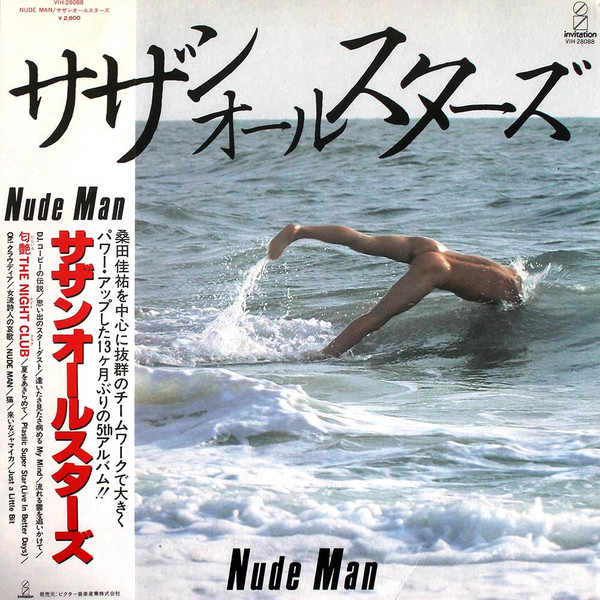If there was a City Pop artist that embodied the word "cool" it would be Yoshino Fujimaru (芳野藤丸). Not just because he's a prolific studio musician, or the fact that he's always wearing a fancy suit with sunglasses on all of his album covers, but also from a musical standpoint. From his smooth deep voice to his west coast yacht rock-style guitar playing, Fujimaru's music provides an aesthetic that oozes with a certain swag that very few can pull off. Nowhere is this more exemplified than in his 1982 eponymous album, YOSHINO FUJIMAL.
THE HISTORY
Feeling inspired by Makoto's work, Fujimaru wanted to move his career in a similar direction and started working on his first solo album. Some notable credits include two members from the band Spectrum, drummer Atsuo Okamoto (岡本郭男), and bassist Naoki Watanabe (渡辺直樹). There's also famous Percussionists, Nobuo Saito (斉藤信男), and all-star saxophone player, Jake H Conception. Makoto Matsushita himself also helps out on the album with backing vocals and extra guitar work, and with him, he brought the drummer Taeko Kukichi (菊池丈夫) who had previously worked with him on Summer Time Love Song from 1979. The album also guest stars female singers, EPO and Haruko Kuwana (桑名晴子), as extra backing vocals. Fujimaru composed all the tracks but received help with lyrics from Kazuko Kobayashi (小林和子), Yoshihiko Ando (安藤芳彦), and American lyricist Jeff Keeling.
After the success of YOSHINO FUJIMAL, released on July 21 of 1982, Fujimaru, Matsushita, Okamoto, and Watanabe, would join forces to form yet another band, The AB's, and continue to hone their unique brand of AOR sound.
THE MUSIC
- Who Are You?: ⭐ ⭐ ⭐ ⭐ ⭐
- Fujimaru evokes summer with his own opening guitar riff that puts the sparkle in your heart, followed up with a groovy tropical disco beat. Haruko Kuwana shares the spotlight on the mic for a wonderful duet.
- Mid-Night Plus 1: ⭐ ⭐ ⭐ ⭐ ⭐
- The momentum picks up a bit as Fujimaru sings about speeding down a rainy highway. The track features a funky bass solo backed by bongos.
- One-Shot Lady: ⭐ ⭐ ⭐⭐
- A funky reggae-inspired groove featuring some awesome percussion.
- Free Way 5 to South: ⭐ ⭐ ⭐ ⭐ ⭐
- The Daytime side ends with a laidback, but cool cruising song. Complete with a memorizing chorus, and a memorable and soothing guitar solo.
- Girl's In Love With Me: ⭐ ⭐ ⭐ ⭐ ⭐
- This groovy R&B track kicks off the Night Side of the album with a bombastic sax solo. Fujimaru's first English song on the record is an instant classic. It was such a good song, they used it for the '80s anime, Cat's Eye.
- Shang-Hide Night: ⭐ ⭐ ⭐⭐
- A funky, oriental-inspired track about nightlife in Yokohama's Chinatown. Features some pleasant piano work accompanied by some interesting synth sounds that make it feel like something from Yellow Magic Orchestra.
- Not What I'm Looking For: ⭐ ⭐ ⭐ ⭐
- A laid-back and atmospheric, groove where Fujimaru tells the story of his encounter with a dangerous and deceitful woman. The use of synths and echoing guitar create an air of suspense one might find in a Neo-Noir film.
- Pretender: ⭐ ⭐ ⭐⭐
- The closing track continues the dark & mellow vibes, but this time with a programmed drum beat, accompanied by a simple bassline and more echoing guitars to create a minimalistic vibe.








No comments:
Post a Comment